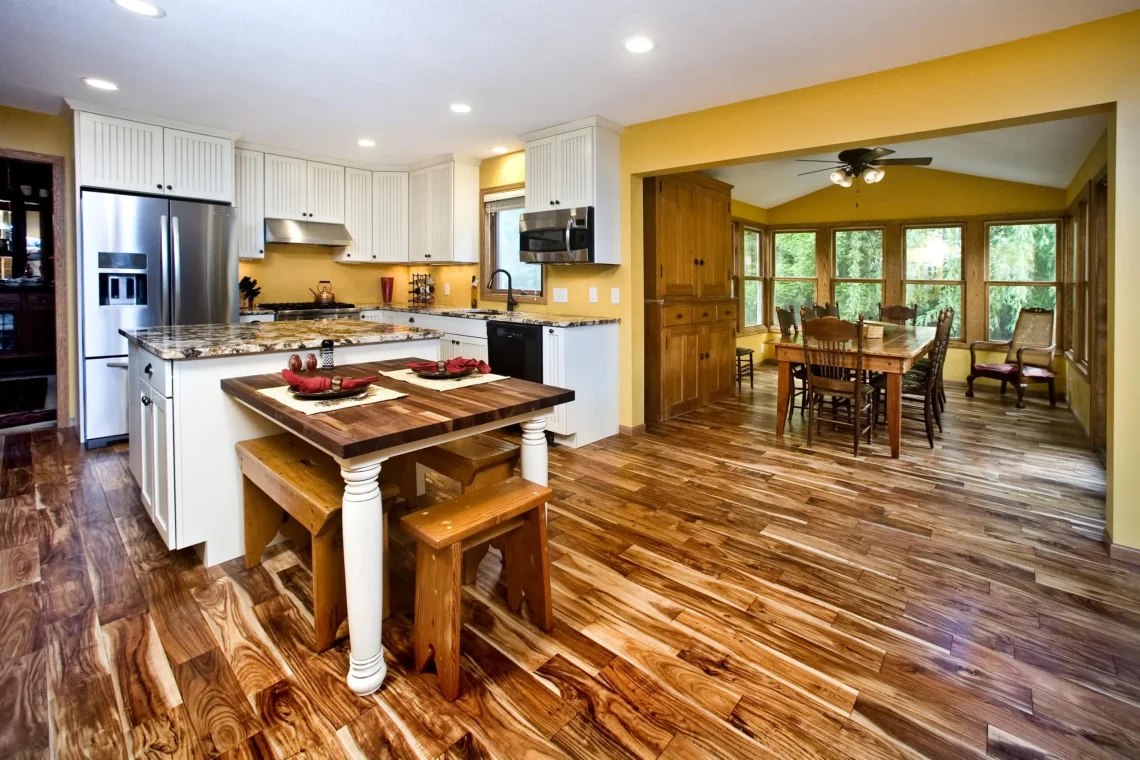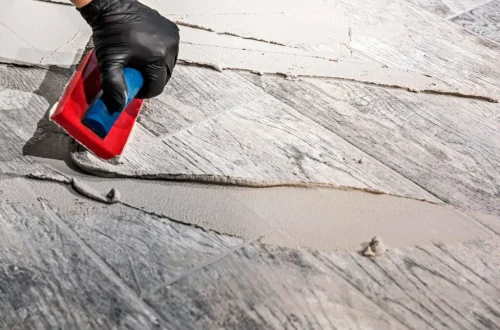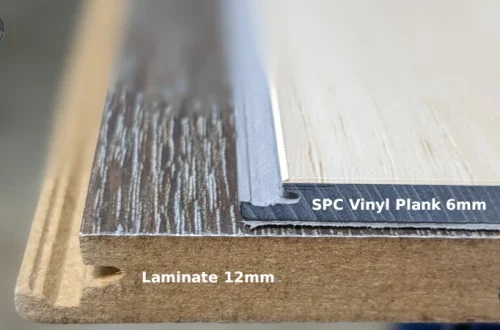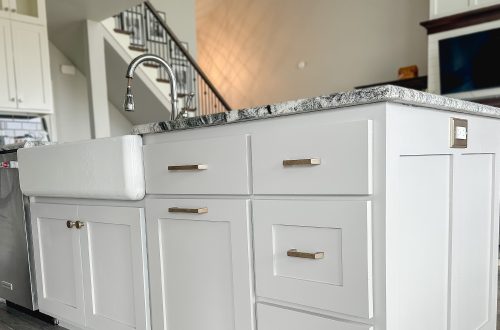Butcher block countertops represent a timeless countertop choice that adds warmth, character, and natural beauty to any kitchen at an affordable price point. Unlike the cold, hard surfaces of traditional materials like granite or quartz, butcher block brings an organic, welcoming element that changes with the seasons and develops a unique patina over time. This comprehensive guide will explore everything you need to know about butcher block, from the different wood options and construction methods to the ongoing maintenance requirements that ensure your investment lasts for decades. Understanding the nuances of butcher block will help you determine if this beautiful material is right for your kitchen and lifestyle, and provide the knowledge needed to make an informed decision that you’ll be happy with for years to come.
Types of Wood & Grain Construction
The beauty and performance of butcher block countertops depend significantly on the type of wood used and how it’s constructed. Understanding these options will help you make the best choice for your aesthetic preferences and functional needs.
Common Wood Choices:
- Maple: The most popular choice due to its hardness, durability, and light color. Maple is naturally antimicrobial and accepts finishes well. It’s also cost-effective and readily available.
- Walnut: Offers a rich, chocolatey brown color that ages beautifully. It’s more expensive than maple but provides a distinctive, upscale appearance. Walnut is slightly softer than maple but still very durable.
- Birch: A cost-effective option that’s harder than oak but not quite as hard as maple. It has a subtle grain pattern and a lighter color that works well in contemporary kitchens.
- Cherry: Provides a warm, reddish tone that deepens with age. Cherry is harder than birch but softer than maple, offering a good balance of beauty and durability.
- Bamboo: Technically a grass, bamboo offers sustainability and unique aesthetic appeal. It’s very hard but can be more prone to scratches than traditional hardwoods.
Wood Selection Tip: Consider how the wood color will complement your cabinetry. Light woods like maple pair well with darker cabinets, while darker woods like walnut work beautifully with light cabinetry.
Construction Methods:
Butcher block is constructed using two primary methods, each with distinct characteristics and applications:
Edge Grain Construction:
In edge grain construction, the boards are glued together with the wood grain running vertically. This method showcases the beautiful end grain pattern and is the most economical option. Edge grain is softer under knife blades, making it easier to maintain with sanding, but it’s more susceptible to visible knife marks.
End Grain Construction:
End grain construction places the boards with the grain running horizontally, so you’re cutting on the end grain surface. This creates a checkerboard pattern and is considered more traditional. End grain is the most forgiving surface for knife work and is naturally more durable, but it’s also the most expensive option.
The Pros and Cons of Butcher Block
Understanding the benefits and drawbacks of butcher block countertops is crucial for determining if this material is right for your kitchen and lifestyle.
The Pros:
- Affordability: Butcher block is significantly more affordable than stone or solid surface countertops. Even high-quality, custom installations are typically less expensive than mid-range stone options.
- Warm, Natural Aesthetic: The organic beauty of wood adds warmth and character that stone or quartz cannot replicate. Each piece is unique due to natural grain variations.
- Self-Healing Properties: Minor cuts and scratches can be sanded out, allowing the surface to be renewed and refreshed over time.
- Warmth Under Foot: Wood provides a warmer feel underfoot compared to cold stone surfaces, which is particularly appreciated in large kitchen areas.
- Knife-Friendly Surface: The softer surface is gentler on knife edges compared to stone or other hard surfaces.
- Repairability: Significant damage can be addressed by sanding and refinishing, extending the life of the countertop.
The Cons:
- Maintenance Requirements: Butcher block requires regular oiling and ongoing care to maintain its appearance and protect against moisture and stains.
- Susceptibility to Water Damage: Without proper sealing, water can be absorbed by the wood, causing swelling, warping, or permanent discoloration.
- Scratch and Dent Potential: While wood is naturally forgiving, sharp objects can still leave visible marks that require attention.
- Staining Susceptibility: Some substances like wine, oil, or acidic foods can leave permanent stains if not cleaned promptly.
- Heat Sensitivity: Direct heat from hot pots and pans can cause burns or discoloration to the wood surface.
Sealing and Maintenance is KEY
Proper sealing and ongoing maintenance are the most critical factors in the longevity and performance of your butcher block countertops. This is where many people encounter issues with the material, but with the right approach, maintenance is manageable and straightforward.
Method 1: Food-Safe Mineral Oil Finish
Applying food-safe mineral oil is the traditional method for finishing butcher block. This approach keeps the wood’s pores open, allowing the surface to be cut directly on, making it ideal for a true cutting surface.
Application Process: Apply mineral oil liberally to the entire surface, allowing it to soak in for several hours. Wipe away excess oil. Repeat this process monthly or as needed when the wood begins to look dry. The frequency depends on usage and environmental conditions.
Benefits: This method is food-safe, allows direct cutting, and creates a natural look that ages beautifully.
Drawbacks: Requires more frequent application and doesn’t provide the same level of protection as film-forming finishes.
Method 2: Polyurethane or Varnish Finish
Applying a film-forming finish like polyurethane creates a more durable, protective surface that’s easier to maintain but not suitable for direct cutting.
Application Process: Sand the surface smooth, apply multiple thin coats of food-safe polyurethane with sanding between coats. This is typically a professional-grade application requiring several days to complete.
Benefits: Provides superior protection against moisture, stains, and wear. Requires less frequent maintenance once established.
Drawbacks: Not suitable for cutting directly on the surface. If damaged, requires professional refinishing to repair properly.
Alternative Finishes: Consider hybrid options like tung oil finishes or specialized butcher block treatments that offer a middle ground between full mineral oil and film-forming finishes.
Installation and Professional Considerations
While butcher block can be installed by DIY enthusiasts, understanding the installation process helps determine whether professional installation is worth the investment.
DIY Installation Considerations:
Butcher block countertops are typically sold in standard lengths (8-12 feet) and must be cut to fit your specific kitchen layout. This requires precise measuring and cutting skills. The weight of butcher block can be significant, especially for large sections, requiring multiple people for handling and installation.
Support brackets or additional cabinetry support may be needed at seams or overhangs to prevent sagging over time.
Professional Installation Tip: Consider professional installation for complex layouts with multiple seams, irregular shapes, or if your kitchen requires precise fitting around sinks and appliances.
Seaming and Joinery:
Butcher block countertops often require seams where multiple pieces join together. Professional installation ensures these seams are nearly invisible. The quality of seaming is crucial for both appearance and maintenance, as poor seams can trap moisture and create cleaning challenges.
Daily Care and Cleaning
Establishing a daily care routine is essential for maintaining the beauty and functionality of your butcher block countertops.
Cleaning Best Practices:
After each use, clean the surface with warm water and mild dish soap. For deeper cleaning, a small amount of white vinegar mixed with water can be used periodically to disinfect the surface. Always dry the surface thoroughly after cleaning to prevent water spots or absorption.
For sanitizing, you can use a solution of one part white vinegar to one part water, or sprinkle coarse salt and rub with half a lemon for natural disinfection and deodorizing.
Avoid These Cleaners: Never use bleach, ammonia, or harsh chemical cleaners on butcher block. These can damage the wood and remove protective finishes. Also avoid soaking the surface or leaving standing water on the countertop.
Stain Prevention and Removal:
Act quickly when spills occur, especially with acidic substances like wine, coffee, or citrus. Blot (don’t rub) spills immediately. For stubborn stains, make a paste of baking soda and water and gently rub it into the stain, then rinse and dry.
For persistent stains, light sanding followed by re-oiling may be necessary to restore the surface.
Addressing Common Issues
Even with proper care, butcher block countertops may encounter certain issues over time. Understanding how to address these problems helps maintain the surface.
Scratches and Knife Marks:
Minor scratches are common with butcher block and add character over time. For deeper scratches, use fine-grit sandpaper (220-320 grit) to sand the area smooth, then clean and reapply finishing oil. The wood will blend naturally with surrounding areas.
Water Rings and Stains:
Water rings often disappear as the wood dries, but if they persist, you may need to lightly sand the affected area and re-oil. For stubborn water stains, try placing a clean cloth over the stain and ironing it with a warm iron to draw out moisture.
Odor Removal:
Butcher block can absorb odors from foods. To remove, sprinkle baking soda on the surface and let it sit for several hours, then vacuum it up. Alternatively, rub the surface with a cut lemon and let it sit for a few minutes before wiping clean.
Dealing with Warping:
Properly installed and maintained butcher block rarely warps, but if it occurs, it’s usually due to moisture exposure. Ensure the bottom of the counter is properly sealed and that there’s adequate ventilation underneath.
Long-Term Maintenance Strategy
Developing a comprehensive long-term maintenance strategy ensures your butcher block remains beautiful and functional for decades.
Seasonal Maintenance Schedule:
Monthly: Apply mineral oil or appropriate finish to maintain the wood’s moisture content. Pay attention to areas that are frequently used or exposed to water.
Quarterly: Deep clean the entire surface and inspect for any signs of wear or damage that might need attention.
Annually: Consider a more thorough maintenance process, including light sanding to remove accumulated scratches and a fresh application of finish material.
Climate Considerations: In dry climates, you may need to oil your butcher block more frequently. In humid climates, ensure proper ventilation to prevent moisture absorption. Seasonal changes affect the wood’s expansion and contraction, so adjust your maintenance schedule accordingly.
Professional Maintenance:
Every few years, you may want to have your butcher block professionally refinished, especially if it has significant wear or if you want to change the finish type. Professional refinishing can restore your butcher block to like-new condition.
Conclusion
Butcher block countertops offer a fantastic and beautiful option for homeowners who appreciate natural materials, enjoy cooking, and don’t mind performing a little routine maintenance. The combination of affordability, natural beauty, and repairability makes butcher block an excellent choice for many kitchens.
The key to success with butcher block is understanding that it’s a living material that requires ongoing care and attention to maintain its protective finish. The natural beauty and character that develop over time are worth the effort required to maintain this beautiful surface.
Remember that butcher block is particularly well-suited to homes where the kitchen is the heart of the home, where cooking and food preparation are central to daily life. If you’re willing to embrace its natural characteristics and perform the necessary maintenance, butcher block will reward you with decades of beauty and functionality.
Before making your final decision, consider your cooking habits, maintenance preferences, and lifestyle needs. Butcher block is ideal for kitchens that see regular use and for homeowners who appreciate the warmth and character that only natural wood can provide.
With proper care and maintenance, your butcher block countertops will become more beautiful and character-rich over time, developing a patina that’s unique to your home and your family’s use patterns.





